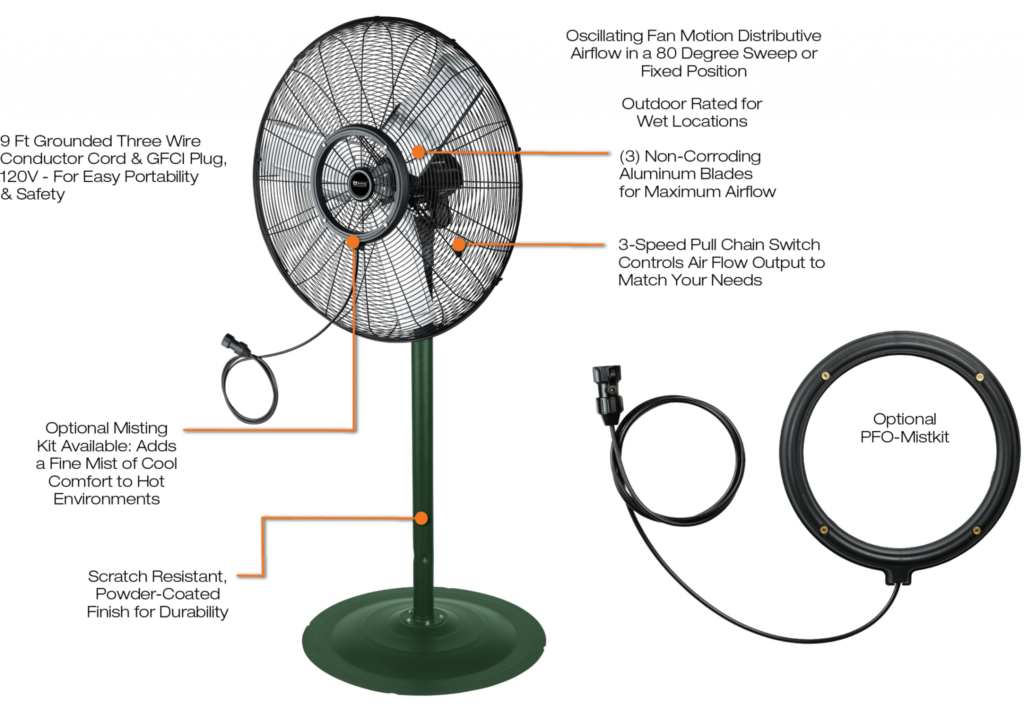Maximizing Efficiency: Understanding How Much Electricity a Standing Fan Uses
Abstract In modern homes, Understanding How Much Electricity a Standing Fan Uses standing fans are a common choice for cooling down in the summer. However, many users know little about their electricity consumption. This article will take a deep dive into the electricity consumption of standing fans, analyze the key factors that affect their electricity consumption, and provide practical energy-saving tips. By understanding how fans work, how to calculate electricity consumption, and how to optimize their use, you can minimize your electricity bill while enjoying the coolness.
I. Introducere
As an affordable cooling tool, standing fans are widely used in homes and offices. Understanding How Much Electricity a Standing Fan Uses However, with rising energy costs, it is particularly important to understand their electricity consumption. This article aims to help users fully understand the electricity consumption of standing fans and provide practical energy-saving tips for efficient use.
II. How Standing Fans Work
Standing fans use motors to drive blades to rotate, generating airflow to achieve a cooling effect. Understanding How Much Electricity a Standing Fan Uses Their electricity consumption mainly depends on the power of the motor and the running time. Most standing fans have a power of between 50 watts and 100 watts, which is much lower than the power consumption of air conditioners.
Argument 1: The motor of a fan is its core component, and its power determines its energy consumption level. Although low-power motors are energy-saving, they may affect the wind strength.
III. Key factors affecting power consumption
- Fan size and power Large fans are usually equipped with higher-power motors, and power consumption increases accordingly. Argument 2: An 18-inch standing fan usually consumes 20%-30% more power than a 12-inch fan.
- Wind speed setting Fans usually provide multiple wind speed adjustments, and high-speed gear consumes significantly more power than low-speed gear. Argument 3: Switching a fan from low speed to high speed may increase power consumption by more than 50%.
- Duration of use Running a fan for a long time will significantly increase power consumption. Argument 4: A 75-watt fan running continuously for 24 hours consumes about 1.8 kWh of electricity.
IV. Calculating the power consumption of a standing fan
- Understanding Watts and Voltage Power consumption is usually measured in Watts (W), while voltage (V) determines the current strength. Argument 5: The standard household voltage is 220V, and the fan’s wattage will be indicated on the power label.
- Power consumption calculation formula Power consumption (kWh) = Power (kW) × Usage time (hours). Argument 6: A 50-watt fan running for 10 hours consumes 0.5 kWh of electricity.
- Sample calculation
- Scenario 1: A 60-watt fan running for 8 hours a day consumes about 14.4 kWh of electricity per month.
- Scenario 2: A 100-watt fan running for 12 hours a day consumes about 36 kWh of electricity per month.
V. Practical tips for reducing electricity consumption
- Use energy-saving features Many modern fans are equipped with timed shut-off and sleep modes, which can effectively reduce unnecessary power consumption. Argument 7: Using the timer function to reduce the fan run time to 6 hours can save 30% of electricity.
- Combining with other cooling methods Using fans in combination with natural ventilation or sunshade measures can reduce reliance on fans. Argument 8: Opening windows for ventilation in the early morning and evening can reduce fan run time by 2-3 hours.
- Optimize fan placement Placing fans in the center of the room or near windows can improve airflow efficiency. Argument 9: Correct fan placement can improve cooling effect by 20%, thereby reducing run time.
VI. FAQ
- How much does it cost to run a standing fan all day? At $0.15 per kWh, a 75-watt fan costs about $0.27 to run all day.
- Is it cheaper to use a standing fan than an air conditioner? Yes, a standing fan consumes only about one-tenth of the power of an air conditioner. Argument 10: An air conditioner consumes an average of 1,000 watts, while a fan consumes only 50-100 watts.
- Does the power consumption of different fan models differ? Yes, energy-saving fans and DC motor fans consume significantly less power than traditional models.
VII. Conclusion
By understanding the power consumption of standing fans and the factors that affect them,Understanding How Much Electricity a Standing Fan Uses users can use this cooling tool more wisely. Choosing the right fan model, optimizing usage, and combining other energy-saving measures can not only reduce electricity bills, but also contribute to environmental protection. Understanding How Much Electricity a Standing Fan Uses I hope this article provides you with valuable information to help you achieve efficient energy conservation while enjoying the coolness.
Summary Although the electricity consumption of floor fans is relatively low,Understanding How Much Electricity a Standing Fan Uses it can be further reduced through proper use and optimized settings. From choosing the right fan model to taking advantage of energy-saving features, every step can have a positive impact on your electricity bill and environmental protection. Let’s start today and pay more attention to the electricity consumption of electrical appliances and move towards green living together.

